- Home
- Fay Weldon
The New Countess Page 25
The New Countess Read online
Page 25
If I speak up, Isobel, widowed, may recreate the home of her childhood, simpler and happier, the laughing, loving demi-monde from which her husband snatched her, putting behind her a grandeur with which she was never wholly happy, but always made the best of, as is her nature. Alice, Ettie and Constance can come and stay and gossip about fashion, art, scandal and who’s who in politics to their hearts’ content, on holiday from their braying, sporting husbands. When Isobel is old, Minnie the young Countess will come down to the Dower House with her two strapping sons and bring her good soup and chicken pie, and perhaps a dainty shawl made of finest spun Angora wool from Liberty to put around her shoulders. And I might well be there as her husband, to grow old with her. Isobel has always needed someone to look after her and keep her safe.
I might well speak up.
Facing the Future
3rd and 4th January 1906, Westminster Abbey and Dilberne Church
The funeral service was held at Westminster Abbey as befitted the late Earl’s rank and status. The interment was to be the next day, at the family vault at Dilberne, opened, swept and warmed for the occasion. One last task for the widowed Countess, Isobel. Hundreds attended the sombre Westminster ceremony. All were in black. Only the occasional diamond gleamed to relieve the gloom, the only other jewellery was jet. The deceased Earl, Robert, had been a great favourite, even tipped, so it seemed, to be a future prime minister, so meteoric had been his rise. Only a few short years from Fisheries to the Colonial Office to the Cabinet. Now this.
Mr Balfour was there to pay his respects, as was Mr Campbell-Bannerman, and rather to Isobel’s horror, David Lloyd George. Arthur the new Earl was there of course, and his sister – without her parrot: she had at least that sensitivity – but the absence of Melinda, the young Countess, was noted. She had been prevented by illness from travelling back from the United States.
All the former Earl’s sporting friends, amongst them Desborough, Ripon and Keppel, turned up to pay their respects. There was a sprinkling of gambling friends and racing enthusiasts, someone who looked suspiciously like a bookmaker, and various political friends and allies. Robert had been a man of many parts, as the Bishop of Bath and Wells, who gave the funeral oration, recalled. His Majesty, alas, could not be present: the trouble with his knee had flared up.
Also there, weeping noisily and disturbing the congregation, was a rather torrid-looking dark beauty in a quite unsuitable red hat, who attempted to throw herself upon the coffin and had to be moved by the ever-vigilant Inspector Strachan. Fortunately the girl had been sitting at the back of the church, and the family, seated as they were in the front pews, did not see the incident.
It was a much humbler party who turned up for the entombment in the family vault a day later. Such servants who could be spared from the running of the house and the preparation of the wake attended, and there was much weeping and lamentation. The coffin was closed not open, which disappointed some. As it was carried into the vault by six bearers, one of them the new Earl, Strachan saw two women and a child draw near. One he recognized as the new Countess, Melinda, charming if pale and wrapped in Russian black sable – not even her mother-in-law had a fur so grand. The other was the woman he had seen disembark so quickly from the Carpania at Liverpool on that shameful day, leaving her passport behind. Grace. She was in a sensible black rabbit fur, and had Master Connor on her hand. The little boy was also wearing fur. Nanny would never have stood for it: ‘Nasty germy stuff – Lord knows what’s lurking in there!’
Though Isobel did not notice Minnie, Arthur did. He faltered in his measured stride, and put his corner of the coffin down with a little more speed than perhaps he should have. He strode over to his wife. She shrank away from him as if expecting to be hit.
‘I know you don’t want to see me here,’ she said, ‘but I loved your father. I’ve travelled four thousand miles to say goodbye to him.’ That said, she found her courage and looked her husband in the eye. ‘I’ve come back if you’ll have me back,’ she said. ‘I’ve brought you Connor. He misses Edgar. He misses you. So do I.’
Arthur was silent. The servants were all ears. She ignored them. She was a Countess now. What did she care what the servants overheard?
‘You can do what you like,’ she said. ‘Go where you like, be with whom you like.’
He was actually smiling.
‘I say, that’s a bit rash, Minnie,’ he said. ‘I won’t have you doing that.’
Master Connor tottered over and put his hand in his father’s hand.
The Inspector spoke up. ‘If I may put in a word, sir—’
‘You may not,’ said Arthur with sudden, shocking and savage rage. ‘You incompetent, you bungling lecherous meddler—’
Connor, frightened, began to cry. Grace led him away to where it was dark and quiet and peaceful, between the stone-covered rows of Hedleigh dead.
‘Minnie!’ said Isobel. ‘What are you doing here? And Arthur, what can you be saying? Here in this place, with your father in his coffin!’ But seeing Connor being led away she forgot Minnie, forgot Arthur, forgot Strachan, and ran after the little boy, knelt beside him and embraced him.
‘Oh dear Connor, Grandmama’s here!’ she cried. Connor looked surprised, but gratified; and he stopped crying.
Grace waited until Isobel released Connor and then said coolly, ‘Why hello, your Ladyship.’
‘Good God,’ said Isobel. ‘Grace!’ She sat down on a slab – the second Earl of Dilberne, as it happened, 1560–1613 – and began to cry, at last without restraint. She cried for lost hopes and aspirations, for her mother, her father and now her husband, all of whom had died, and left her more and more alone, until finally here she was, altogether lonely, with a son who was going to go back to his wife and who thought she was having an affair with a police inspector when she wasn’t. She cried because her daughter Rosina was so peculiar and had fled back to her louche London life after the funeral and had not come down to the family vault to comfort her mother: she cried because no one really liked what she had done to Dilberne Court and everybody hated bamboo furniture, and now Minnie was back and Minnie was the Countess and she was not, and Minnie would hate her and drive her out to the Dower House which was falling down, and she didn’t think she had the heart to do anything about anything any more. It all ended in death anyway.
‘Oh, your Ladyship, don’t take on so,’ said Grace. ‘I’m here. Your eyes will be so red! We all depend on you so!’
Connor buried his little blond head in Isobel’s lap and she felt better.
‘I can assure you, my Lord,’ Strachan was saying, ‘I hold your family in the greatest respect. My only desire is to keep them from harm.’ He spoke so earnestly that Arthur seemed almost pacified. But Strachan could not leave it alone, as was in his nature. ‘And in case you have any fears I can assure you that my relationship—’
‘No, no,’ said Arthur. ‘For God’s sake keep your feelings to yourself. I want to hear nothing more of them. I have no fears, I have my wife back.’
A glorious smile spread over Minnie’s face. Strachan could see words were inappropriate and went to console Isobel. She took his hand and they sat on the tomb of the second Earl side by side, and contemplated their future.
‘Redbreast – that rat,’ the Earl said into his wife’s ear. ‘Why should I play into his hands by divorcing you, just to provide cover for him? The whole world knows what he is, the prancing ninny. Does he think I’m stupid?’
‘It didn’t happen anyway,’ she said.
‘Of course it didn’t,’ he said. ‘Why would you want him when you have me?’ He seemed most inordinately cheerful.
When they were back in the Court, Isobel said, by way of acceptance and indeed apology:
‘Dear Minnie, the bamboo furniture never really worked. You were quite right. With your permission I shall take it with me to the Dower House.’
Bless You All
22nd June 1906, St Martin-in-the-Fields
The Times reported the
wedding between Mr William Brown and Lady Rosina Overshaw at some length, as did the Mirror and the Express. It was not surprising; such a romantic story! Mr Brown was the senior editor at Longman of London, the publishers, and Miss Rosina Hedleigh (as she preferred to be called) was the author of the best-selling book The Sexual Manners and Traditions of Australian Aboriginals, which Longman had published, and which after some initial controversy had done so well thanks to the approbatur of the Sovereign. A romance had quickly blossomed.
It was the wedding of the decade. Everyone who was anyone was there: the mother of the bride, of course, Isobel, Dowager Countess of Dilberne, rather shockingly out of mourning and in pastel silks, represented the older generation. Otherwise, it was noted, everyone was so young. Unfortunately she had to leave early due to indisposition. The bride’s brother, Arthur, the Earl of Dilberne, and his wife Melinda, the Countess, and their two delightful little sons were in attendance. (The Express, being the Express, hinted that Minnie was in the family way: The Times would never be so indelicate.) Mr Herbert Austin the motor manufacturer was amongst the many who lined the aisles. It was rumoured in the Mirror that Lord Arthur was to sell his business concern to Austin’s Longbridge firm, and devote himself to running the Dilberne estates. The recently promoted Superintendent Andrew Strachan of the Metropolitan Police sat on the bride’s side. Writers from a variety of social strata were there, as the Express pointed out; from those in the aristocracy to Mr D. H. Lawrence, Mr H. H. Munro to Mr Siegfried Sassoon to Mr Rudyard Kipling. The Express observed that social niceties were a thing of the past, and welcomed the end of class petrification.
The airy and elegant church was bright with smiles and fresh hope that day as the young couple were united. Mr Baum the financier turned pioneer farmer had sent orange trees all the way from Palestine to decorate the aisles, and the whole building smelt of orange blossom. Many had chosen to wear white, and hats gleamed with jewels as was the season’s fashion with the younger set.
All in all it was an enchanted and enchanting occasion. The groom wore the latest thing in male fashion, a bleached sealskin suit with a white silk cravat worn high, a red tie and high spat-style boots with blue buttons. The Honourable Anthony Robin, the best man, wore a similar suit and cravat but with a blue tie, and shoes with red buttons. The bride amused everyone by wearing a tightly-bodiced, low-cut white satin dress but with the freeing and voluminous split skirt of the moment, which to some looked suspiciously like bloomers; an orange-blossom head-dress rather than a veil, and her parrot on her shoulder as an accessory. The only bridesmaid, the Honourable Anthony Robin’s sister Diana, was dressed in a corseted satin white tuxedo silk shirt with satin ruff, and a skirt with vertical red and grey stripes, the shade of red matching Pappagallo’s tail feathers.
Rosina’s parrot had been trained to utter a new cry for the occasion which he squawked at appropriate intervals throughout the ceremony, only occasionally lapsing into ‘Too right, mate! Too right!’ or ‘Votes for women!’ The bird seemed to have an uncanny ear for the right line at the right moment. All declared that he understood perfectly well what was going on, and that he approved.
‘Bless you all! Bless you all!’ said Pappagallo.
We hope you enjoyed this book.
To find out about Fay Weldon, click here.
To discover more books by Fay Weldon, click here.
For an invitation from the publisher, click here.
About this Book
The year is 1905 and King Edward VII has invited himself and his mistress to a shooting weekend with the Dilbernes. Now Isobel, the Countess, must turn a run-down mansion into a palace fit for a king. Just as well the family fortunes have been restored, but money can’t solve everything...
The servants refuse to condone the King’s morals; Isobel’s daughter, Lady Rosina – now widowed and wealthy – insists on publishing a scandalous book, and the mis-spent pasts of Viscount Arthur and his Irish-American wife Minnie rear up to blacken the family name. When fate deals a hand in the middle of the shooting party, Isobel must consider not only her leading position in Society, but her entire future.
Fay Weldon brings an aristocratic Edwardian household to fabulous, vibrant life in this gorgeously witty tale of manners and morals, commoners and countesses, from one of Britain’s best loved authors.
Reviews
“Julian Fellowes must look to his laurels, and Downton Abbey may find itself running second to 17 Belgrave Square.” —Scotsman
“Weldon at her most spellbinding” —Spectator
“A splendidly fun romp” —The Times
“Hugely enjoyable” —Tatler
About this Trilogy
THE LOVE AND INHERITANCE TRILOGY
The Love and Inheritance trilogy is a family saga set between 1899 and 1906. The aristocratic Dilberne family lurch from wild wealth, to bankruptcy, and back again, their fortunes dependent on the new steam-powered automobiles, Spiritualist gatherings and Christmases at Sandringham. But as the century turns, the rigid rules of society begin to soften...
Following lives and loves upstairs and downstairs, and brimming with Fay Weldon’s trademark wit, wisdom and warmth, this is a trilogy to treasure.
I. Habits of the House
Set during a single year in the dying days of Victoria’s reign, Habits of the House tells the story of the Dilberne family and their staff. All have secrets, but for the most part life runs smoothly, with very little intrusion from the world outside.
So when the events of a single turbulent morning herald bankruptcy and ruin for the Earl of Dilberne, the solution is to marry off his only son, Arthur. But as life above and below stairs shows the strain of impending disaster, the secrets of the household may prove fatal to the Earl’s plans.
Habits of the House is available here.
II. Long Live the King
With London Society in a frenzy of anticipation for the coronation of King Edward VII, the Earl and Countess of Dilberne are caught up in lavish preparations. Yet Lady Isobel still has ample time to fret, and no wonder with a much longed-for heir on the way, an elopement, family tragedy, a runaway niece and a gaggle of fraudulent spiritualists to contend with…
Fay Weldon once again draws her readers into the lives and loves of the aristocratic Dilberne family, as they embrace not only a new century, but a new generation – a generation with somewhat radical views…
Long Live the King is available here.
III. The New Countess
The King had foreign tastes; a French chef would have to be brought in and where could one find such a one at short notice? Existing staff would have to move up and share beds, which always made them sulky and resentful just when they should not be. Pathways must be constructed so the ladies would not get their feet muddy as they joined the men, and field kitchens erected so that dishes could be served hot and claret warmed. At least the King’s champagne – he had to have champagne when shooting, though frugal enough with alcohol otherwise – would be cold enough. Isobel found her heart beating hard and her breath coming short. Five months to prepare for one weekend – it was a monstrous task.
The New Countess is available here.
About the Author
One of the most successful advertising copywriters of her generation, Fay Weldon’s credits as a writer of fiction include classic novels like The Life and Loves of a She-Devil and Growing Rich, and the pilot episode of the original TV series ‘Upstairs, Downstairs’. In 2001 she was awarded a CBE for services to literature. She has seven sons and stepsons and one stepdaughter, and lives on a hill in the west of England.
A Letter from the Publisher
We hope you enjoyed this book. We are an independent publisher dedicated to discovering brilliant books, new authors and great storytelling. Please join us at www.headofzeus.com and become part of our community of book-lovers.
We will keep you up to date with our latest books, author blogs, special previews, tempting offers, chances to win s
igned editions and much more.
If you have any questions, feedback or just want to say hi, please drop us a line on [email protected]
@HoZ_Books
HeadofZeusBooks
Dedicated to great storytelling
First published in the UK in 2013 by Head of Zeus Ltd.
Copyright © Fay Weldon, 2013.
The moral right of Fay Weldon to be identified as the author of this work has been asserted in accordance with the Copyright, Designs and Patents Act of 1988.
All rights reserved. No part of this publication may be reproduced, stored in a retrieval system, or transmitted in any form or by any means, electronic, mechanical, photocopying, recording, or otherwise, without the prior permission of both the copyright owner and the above publisher of this book.
This is a work of fiction. All characters, organizations, and events portrayed in this novel are either products of the author’s imagination or are used fictitiously.
9 7 5 3 1 2 4 6 8
A CIP catalogue record for this book is available from the British Library.
ISBN (HB): 9781781851630
ISBN (TPB): 9781781851647
ISBN (E): 9781781851661
Head of Zeus Ltd
Clerkenwell House
45-47 Clerkenwell Green
London EC1R 0HT
www.headofzeus.com
Contents
Cover
Welcome Page
Part 1
A Visit to Stonehenge
Midsummer’s Day, 22nd June 1905
Minnie Gives a Birthday Party
25th June 1905, Belgrave Square

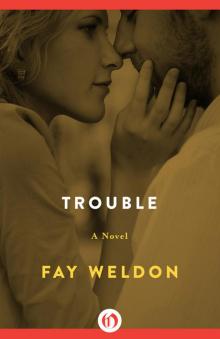 Trouble
Trouble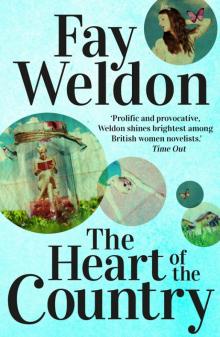 The Heart of the Country
The Heart of the Country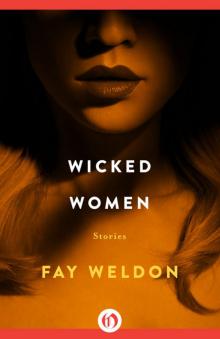 Wicked Women
Wicked Women Mischief
Mischief Long Live the King
Long Live the King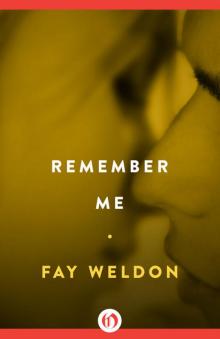 Remember Me
Remember Me Worst Fears
Worst Fears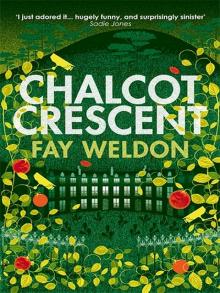 Chalcot Crescent
Chalcot Crescent Moon Over Minneapolis
Moon Over Minneapolis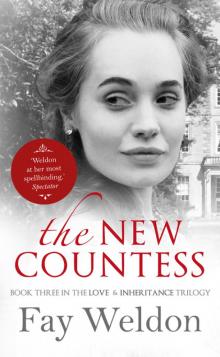 The New Countess
The New Countess Splitting
Splitting After the Peace
After the Peace Habits of the House
Habits of the House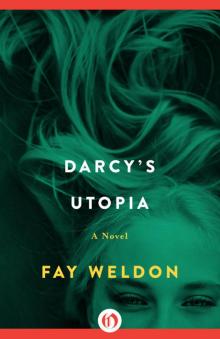 Darcy's Utopia
Darcy's Utopia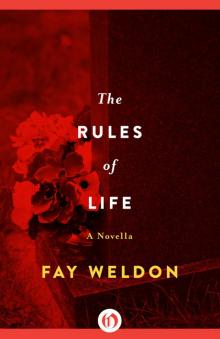 The Rules of Life
The Rules of Life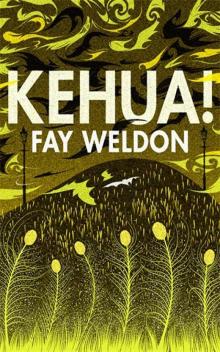 Kehua!
Kehua! Before the War
Before the War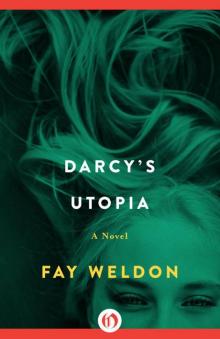 Darcy's Utopia: A Novel
Darcy's Utopia: A Novel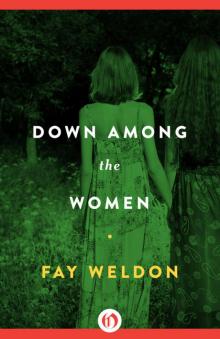 Down Among the Women
Down Among the Women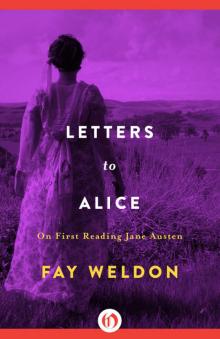 Letters to Alice
Letters to Alice 3 Great Historical Novels
3 Great Historical Novels Female Friends
Female Friends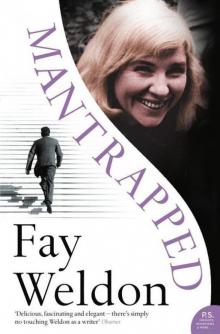 Mantrapped
Mantrapped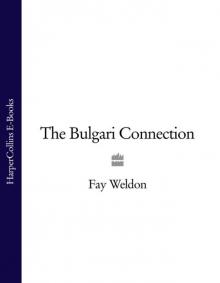 The Bulgari Connection
The Bulgari Connection The Hearts and Lives of Men
The Hearts and Lives of Men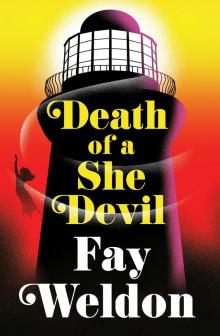 Death of a She Devil
Death of a She Devil